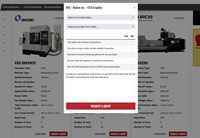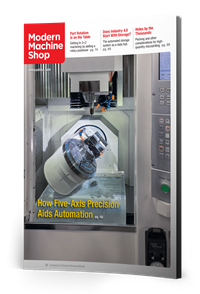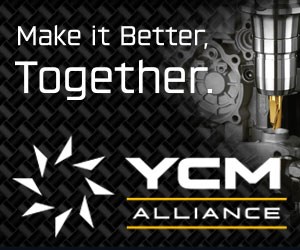Learn What More Your Software Can Do
Consider a software audit involving the software company’s support personnel. Let them watch how you use (and don’t use) the capabilities of the product you already own.
Share





Microsoft Word will alphabetize a list automatically. I didn’t know that. A couple of times, I put a list in alphabetical order by copying and pasting the text one line at a time.
Ken Skovran says that’s the way it is with software. He is a sales representative for CGTech, makers of Vericut simulation and verification software. I spoke with him at a recent “Vericut Users Exchange” (see schedule). He says that software users often do not know of all the features that can save them effort and time. This is particularly true of long-time users, who often don’t find the time to discover all of the relevant new capabilities that have been added to later releases of the software.
He recommends what he calls a software “audit.” Have the software’s support personnel watch how you use (and don’t use) their product. CGTech personnel do this for customers frequently. That is, they visit a shop and watch the product not with an eye to selling more capabilities, but instead with the aim of discovering opportunities for the capabilities a shop has already bought.
In the case of Vericut, what gets discovered during these audits might include any of the following, all of which relate to capabilities that have been significantly improved in recent years:
● Documentation. Many shops don’t realize it, but the software can easily generate setup and tooling sheets. It already has the information necessary. Some long-time users still develop these sheets from scratch.
● Templates. Substantial time savings can be won by creating detailed simulation or verification templates that prevent a shop or user from having to enter recurring information for each new job.
● Multiple machines. Separate machines can be part of a single simulation. The software can remember what material was left after one cycle, and begin at this point with a cycle on the next machine.
● Optimization. Users sometimes apply the feed-rate optimization of Vericut only for applications where saving cycle time is particularly critical—not wanting to interfere with NC programs other than that. However, Mr. Skovran notes that the impact of optimization on the program can be carefully controlled. For example, the optimization could be applied only to eliminate air cutting—a significant improvement by itself, and one that would not affect any of the tool moves that are actually cutting material.
Related Content
-
The Power of Practical Demonstrations and Projects
Practical work has served Bridgerland Technical College both in preparing its current students for manufacturing jobs and in appealing to new generations of potential machinists.
-
Can ChatGPT Create Usable G-Code Programs?
Since its debut in late 2022, ChatGPT has been used in many situations, from writing stories to writing code, including G-code. But is it useful to shops? We asked a CAM expert for his thoughts.
-
ERP Provides Smooth Pathway to Data Security
With the CMMC data security standards looming, machine shops serving the defense industry can turn to ERP to keep business moving.



















.jpg;maxWidth=300;quality=90)




